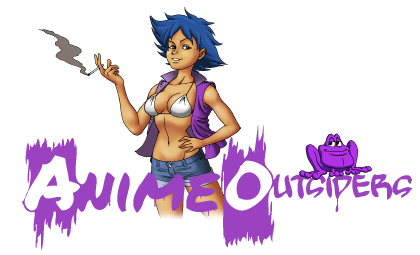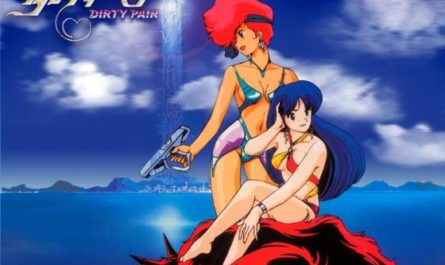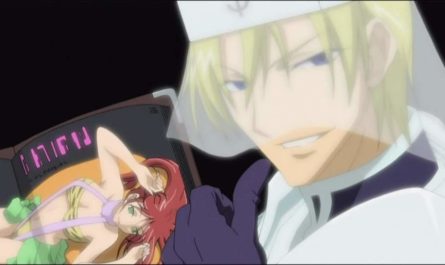Dean Talks Anime:
Magical Girls and What to do About Them
An opinion by Christopher Kinsey
A curious tweet sent me into a thoughtful state on where we are as a fandom.

So it’s no secret that hordes of men are really into the perpetual soap operas that are magical girl anime. But look at all the other things that dudes are becoming quite the following of. The largest example is the male My Little Pony fanatic known as the “Brony”, but there are followings of just about any female led project designed for little girls. And it seems that every reboot of a treasured girl marketed cartoon from the 80s or 90s seems to get marketed to not just little girls, but their male relatives of all sorts. An example I’ve seen recently is a series of shorts called Barbie, Life in the Dreamhouse. Now obviously Barbie has been queen of toys made for girls for a long, long time. But to make this show appealing to the whole family, they made it a kind of “reality” show about Barbie and her friend’s lives. Now that’s more than enough to get the attention of a kid; but for the adults that have to sit through it there are a great many gags on how they are plastic, and they live in toy houses. It’s a small touch, but it makes it bearable for anyone not vested in the product itself. Properties targeted towards girls in America have morphed into something that the family can enjoy on some level or another. On one hand is great, because for the longest time most properties in that genre were downright retched and boring. But on the other it can go too far, which leads to the primary audience in the dust as everyone the show wasn’t intended for gets the bulk of the entertainment.

Well that’s the west, but what about across the Pacific? It’s not uncommon knowledge that magical girl series always have a presence. Magical Play(2001) effectively lampooned the genre as well as those who love it, while Madoka Magica deconstructed the themes in a manner that should never be seen by a 6-8 year old girl. These were not made for the original audience. While there are still magical girl shows being made for kids, the ones we get seem to have lots of more mature themes and ideas within.
In 1966 Mitsuteru Yokoyama created the manga Sally the Witch. Animated later that year by Toei animation, it’s widely regarded as the first magical girl anime. But it was missing what many consider to be what defines this genre, transformations. In 1969 an animation based on Himitsu no Akko-chanwas based around transformations into all sorts of things, and kind of pinpoints when the genre as we know it emerged. Sailor Moon ran alongside the rise of anime in the 1990s, and certainly contributed to anime’s rise in the west but I’ll touch on this later. At this point the magical girl genre was tackling more young adult themes and expanding into the idea of drama alongside what was usually a comical affair. CLAMP series like Cardcaptor Sakura (1998) and Magic Knight Rayearth (1994) also normalized this type of story with the humor, action and drama appealing to both sexes. But in 2004 came the release of Magical Girl Lyrical Nanoha, which is quite possibly the first magical girl series designed with the male audience as its main target. The series had a real shonen feel to it while retaining that kind of drama that was easy to hook folks onto. Since then in both character design and tone, a great many magical girl series has tried very hard to cater to a male audience.

So those are the waypoints to where we are today. American fans have an excuse, kind of. Back when Japanese animation was being translated in the 60s to the 80s no one paid a thought to the shows produced for girls. Not flashy enough, nothing really fit the popular girl’s toys at the time, and the themes were often confusing to an American audience. 1995 marked the year DIC Entertainment secured the rights to all things Sailor Moon in the west. The hope was to create a Power Rangers for girls and get a lot of merchandise produced which was already handily created for the huge market in Japan. And it worked, a little too well. Beyond the huge edits to story and tone for the western markets, the series was one of the few Japanese properties being aired regularly in the states thanks to DIC’s powerhouse distribution and syndication of children’s programming at the time. For the anime fan on a budget, it was huge. Following the mindset that you took what you could get, you had a steady diet of Sailor Moon and Dragonball Z to tide you over until you could scrape up enough allowance to get two episodes of anything else on VHS at the (Gasp!) physical media store. As such a lot of the US and Canadian markets grew up accepting both sides of shonen and shojo properties. It’s a little understandable to be nostalgic at times for such series, because as Sailor Moon rose in popularity anything featuring this magical girl element was being brought over to capitalize on the trend.

But looking at those titles today, it seems clear what was happening in Japan. Some of the examples I can think of from that era are very mature, experimental, and really pushing the boundaries of what was traditionally a really simple story. Revolutionary Girl Utena (1997) delved into some lengthy discussions on gender roles and homosexuality dressed in all the mysticism, prettiness and magic so everyone could arm wave around “Oh no, nonono Utena and Anthy aren’t REALLY gay. It’s just how the magic works, yeah… magic.” New Cutey Honey(1994) shed anything the censors were taking out of the original manga in the 70s and ramping up the blatant nudity and lesbian undertones, as was customary for OVAs of the 90s. This all had a lingering effect on any shojo productions in the future that featured magical elements. Something clicked with a wider audience if there was a certain degree of complexity to not just the relationships in such a story between characters, but of the very worlds they inhabited.

Let’s go forward to the property on everyone’s mind when it comes to magical girl anime now of days, Puella Magi MadokaMagica. AkiyukiShinbo, the director of this series, had a long history of producing series with strong yet cute female leads. He started as an animator on the venerated UruseiYatsura (1981) and began as a full director with Metal Fighter Miku (1994) along with a string of OVAs featuring more magic and heroines ultimately leading him to the Seven Arcs production company. For those among us who know our production houses, Seven Arcs began its life producing adult themed animation, the most notorious of which is known as Night Shift Nurses and the less said about THAT the better. But this was all to build the capitol to make a really honest to goodness TV anime series. As it turns out, they produced Magical Girl Lyrical Nanoha which, as mentioned above, was a magical girl anime primarily designed to draw in a male audience. It was spun out of a property Seven Arcs animated based on a pornographic visual novel game called Triangle Heart. Both of these series were directed by the above Shinbo and made about a metric ton of sweet, sweet NEET money in Japan.

Shinbo followed this up with adaptations of Petit Cossette and Moon Phase as well as touching on about every production of anime studio Shaft. So between a penchant for pretty girls and dark themes someone in the chain of command thought “We need to go darker, like coal mine dark” and phoned up Gen Urobuchi. If you know anything about this man’s work you might have to sit down for a second because this is about to get depressing, gross or both. He is really well known for dragging in the most nihilistic of themes in his works, most notably in the erotic (debatable) visual novel Saya No Uta in 2003. When his works are not as… descriptive as that series his writing is bleak but interesting. So when you wanted to mar the happy go lucky world of magical girls, it’s understandable you might pull him into the writers pen. Together Shinbo and Urobuchi brought us Puella Magi MadokaMagica, and the game has changed yet again. Considered a deconstruction of the entire genre, this one series has turned what was once an arena of scorn even amongst the most diehard of Japanese cartoon enthusiasts into a pseudo intellectual air that lends without a doubt in many people’s minds that magical girl is more than just a genre trying to sell middle school girls their first makeup case.

This has been a strange transformation over the years and it is fueled by the idea that we needed to change something meant for one audience to another because, in society’s eyes, it was pretty sad to be a male and enjoy these series without that change in perception. Instead of understanding that it should never matter what you like, we’ve irreversibly changed something that never needed a darker edge. Or have they? Recently I was scrolling through the old Netflix lineup and found Glitter Force. Saban Entertainment truly has gone back to roots and turned Smile PreCure! (2012) into something deserving to the girls of the world, a magical girl anime that’s firmly ready for its intended audience. I can hear the wailing and gnashing of teeth now about how much they strayed from the original source, or are missing too many episodes, or a thousand other nitpicks about the transformation of a series that we saw regularly in the 90s. Could it be translated better and still sold to young girls? Probably, but this is just the thing to remind the anime community that we have to cater to more than just young men with disposable incomes. Everyone deserves a chance at the table, and if Glitter Force can be a gateway to a new fan just as Sailor Moon scooped up many young ladies to the fandom back when I was young, then I think we need to have more series just like it.
Dean The Adequate was given a magical bottle of whisky by a talking animal one day and now spends his nights as Sailor Jerry, intoxicating the just and tattooing the wicked on a nightly basis. During the day he continues his daily life trying to get sempai to notice him by throwing his empties over the fence. Of course reflecting on the 13 DUIs and various days waking up in the drunk tank, that “Talking Animal” might just have been hobo Jim under the bridge passing off his patented nightmare fuel as drinkable hair tonic again.



